The road to Chaypa rises out of southern Peru's Sacred Valley under blue eucalyptus trees, following one of the countless rock-bottomed streams descended from glaciers whose meltwater will ultimately reach the Atlantic by way of the Amazon River. The air, at just over 3,000 metres above sea level, starts out thin and gets thinner as the gravel trail ascends. Switching back over Incan terraces 600 years old and more, a succession of villages roll by whose circumstances deteriorate with the altitude. By the time Chaypa's 60 stone houses appear, spread like oxygen molecules across several square kilometres of sun-baked mountainside, the lush valley bottom just an hour's drive distant seems a world away. Gone are the corn fields and billowing trees; at nearly 5,000 metres, the only things that grow are potatoes.
"And even those are a real bitch," says Sandra McGirr, the tawny British Colombian nurse who has been working in Chaypa and the two communities below it for the past two years. Slowing her truck to search for a shoulder wide enough to park on, McGirr points to brown patches of hand-tilled earth barely distinguishable from the surrounding landscape. "Last January's floods filled the harvest with worms. The people here will still eat it, but now they've got nothing to sell."
In 2008, McGirr and her husband Sandy Hart moved to the Sacred Valley from Tatla Lake, a small community in B.C.'s Chilcotin Plateau. With two children in tow, their plan, vague at first, was to bring clean water and free health care to one of Latin America's poorest demographics: the traditional Quechua of the high Andes.
McGirr brought 20 years of experience working as a registered nurse in remote First Nations communities throughout B.C. and Nunavut, while Hart, a member of B.C.'s Association of Professional Engineers and Geoscientists, had spent 30 years consulting on environmental projects throughout Canada.
"I've never had an honest job in my life," Hart told me when I first visited the couple in their half-built house at the bottom of the Valley. "I'm quite proud of that."
The couple founded Desea, a shoestring NGO that ate up $20,000 of their personal savings while they searched for funding during the first year. In 2009, a pair of grants from CIDA and the Annenberg Foundation (a private American foundation), gave Desea a one-year breather of $40,000.
Hart and McGirr now draw a combined salary of $600 a month, which is about to run out again in August. When I heard about their story while researching indigenous rights in the region, it struck me as an Andean version of Three Cups of Tea -- a notion I had confirmed when McGirr invited me to tag along on one of her trips to the field.
'Make her day a little better'
Parking spot located, McGirr and Vilma Huayllapuma, the 39-year-old Quechua and Spanish-speaking nurse who grew up not far from here, led me a hundred metres up the hillside to visit the day's first client: Maria Condor Mamani, an 82-year old Quechua woman stricken by severe arthritis.
We found her sitting in the sunshine, leaning against the cobblestone wall of her house beside a pile of fava beans. Maria looked ancient as the hills; when the weather was good like today, she hobbled from bed to this spot in the sun, where she'd sit until dark without moving. When it rained, she simply stayed inside the smoke-filled, windowless house she was born in, waiting for the clouds to clear.
"At this point," McGirr said as she and Vilma sat down beside her, "all we can do is try to make her day a little better." She pulled a handful Tylenol Arthritis pills from her bag and set them by the beans. An open sore on Maria's forearm leaked a slow scarlet dribble, which her husband, seated equally immobile beside her, promised to treat with potato peels. "Our priority is to support their use of traditional medicines," McGirr said, shaking her head and pulling out a bandage, "but obviously there's a place for western medications too."
As Vilma soothed Maria with quiet conversation, a woman dressed in the brilliant clothes dyed in plants grown further down the valley came into the yard. She was the old man's daughter from a previous marriage. With five children to raise on her own, however, she had no time to take care of her increasingly helpless father and mother-in-law -- her husband, like all of Chaypa's men, worked as a porter on the Inca Trail to Machu Picchu, and was almost never home. "By the time they do come back, the men have spent all their money on booze and the only thing they bring back is a hangover," McGirr said.
A safe, clean drink of water
She took me inside the stone hut, black as night beyond the shaft of light the open door let through. Once my eyes adjusted, I saw the water filter Desea had installed. Its simplicity belied its effectiveness: a metre-high cement column, filled with fine sand and a layer of course gravel at the bottom -- cheap, sturdy, and built of locally available materials.
Designed by the University of Calgary's David Manz, water poured in the top of a biosand filter (so-called because of the biological soup that forms naturally in the top layers of sand) comes out a spigot at the bottom about an hour later. By then, it's been cleared of over 90 per cent of bacteria, viruses, and 99 per cent of the parasites that populate the water supply in Chaypa and towns like it all over the world, where sanitation is unheard of and herds roam next to all the creeks.
The World Health Organization estimates that 94 per cent of the world's 1.8 water-related deaths each year could be prevented by improving water supply and storage; in other words, that bland cement pillar in Fiorela's living room is one of the most significant life-saving devices known to the developing world.
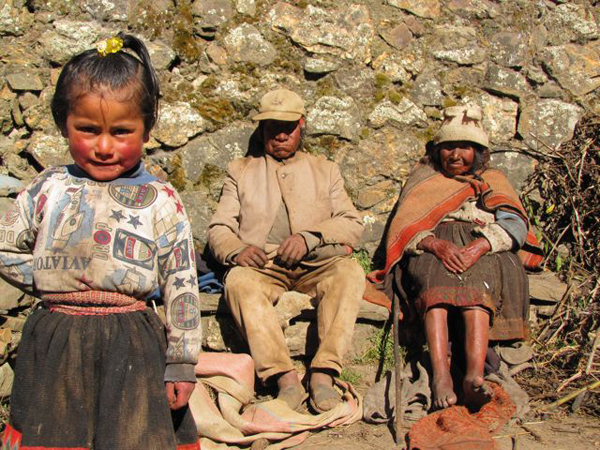
Back outside, it emerged that the daughter-in-law was pregnant again. She looked worried; so did Vilma and McGirr. This would be her ninth pregnancy, three having ended in stillbirths, and this one threatened to finish her as well. Vilma fished a package of prenatal vitamins from her backpack, then urged the woman to make it to a hospital when time came to give birth.
"After so many pregnancies and the life she's led, she's almost guaranteed a massive hemorrhage," McGirr explained. The woman promised she'd deliver in a hospital, "but she probably won't," McGirr said.
"In the first place, hospitals here demand that women spend a month in the hospital before birth, which if you know anything about life around here is absolutely ridiculous. Who's going to take care of the kids, or the potatoes, or the sheep?
"And Quechua women are extremely conservative; they don't allow men near the birthing table, and even so they deliver with their clothes on. In the hospitals, male doctors make them strip and raise their feet up in stirrups. After experiencing that once, they'll never go back."
Maria started weeping as we left. "I don't have any children of my own to take care of me," she lamented. "I gave birth to three children, and all of them are dead."
Stephen Harper's challenge
On March 29, in his opening address to the G8 meeting in Gatineau, Quebec, Stephen Harper spoke about the need to "focus attention and resources on saving the lives of mothers and children in the developing world." Since then, he has backed this new development priority with the promise of up to $1.2 billion in funding. If that promise is to bear any fruit, it could do worse than support grass roots NGOs like Desea that are already hard at work.
"When we first moved here," Sandy Hart told me, "we only planned to stay for a year. We thought we'd install a few water filters, treat a few patients, and head back home. But aside from falling in love with the region, we learned that the only way to do this kind of work is to build long-term relationships.
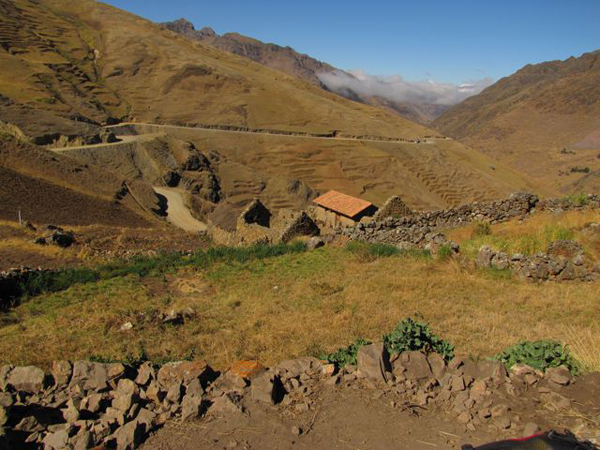
"If you just plunk down a water filter and tell people to use it, they might -- for a month or two. You have to sit down with them and teach them to build it themselves; then once they've hauled it up to their house, you have to visit them every couple weeks for a chat; you ask about the family, and oh, by the way, how's that filter doing? It only takes a couple weeks to build, but it takes a year to make it stick."
Two years later and despite the financial abyss they're now staring into, McGirr and Hart are hoping to expand. McGirr has already hired Vilma Huayllapuma as Desea's full time coordinator. A technical nurse who spent years in Peru's ministry of health, Huayllapuma now spends each day in the mountain communities, identifying the neediest families and following up with those already on Desea's client list.
How to change a community
Meanwhile, when McGirr isn't out in the field as well, she keeps busy writing a series of 18 modules for health care delivery in the developing world; they cover everything from pre- and post-natal health care to tuberculosis and leadership. McGirr is teaching the contents of those modules to five Quechua women chosen by their communities to work as local nurses -- a daily presence that makes all the difference in such far flung communities, where most people lack the means to visit a clinic when something goes wrong.
"You change a community through educating the women," McGirr told me as we hiked the lung-busting two kilometres between us and the following patient. For now, Desea pays its Qhalis -- Quechua for "working for health" -- the equivalent of a dollar an hour; that's a few cents less than the wage men earn on the Inca trail, because the community won't allow a woman to make more than a man.
"Women are incredibly oppressed in these communities," McGirr says. "If the only thing we did was show five of them that they have agency and self-worth, that would be enough. But in fact, we do much more."
Just how much more came apparent as we pulled up to the home of Marcelina, a 40-year-old, husky-voiced mother of four whose husband left her two years ago. In January, a neighbor happened to pay Marcelina a visit and found two of her children doubled over on the turf outside, barely conscious; the other two were inside the house with their mother, all in similar condition.
"We'll never know if she’d tried to commit suicide or if, as Marcelina says, it was her mother-in-law who poisoned the whole family after growing tired of Marcelina's complaints about her son," McGirr told me as Marcelina ran to greet us. "Either way, you get an idea of how desperate people can get here."
The neighbor ran three kilometres to fetch one of Desea's nurses, who, on arrival, made everyone drink cooking oil and soap to get them vomiting up the poison, then put them all in the recovery position until enough people arrived to carry them to a vehicle waiting on the road.
"She had just finished our emergency first aid course two weeks before," McGirr says. "I can't describe the amount of credibility that gave the nurses, and by extension Desea, in the eyes of this community. But most importantly -- here's Marcelina now."
Beyond an empty monument
When I asked Vilma how she liked working with Desea compared to the ministry of health, or the handful of international NGOs she'd worked with previously, her response was immediate.
"With the other organizations," she said, "we would wait at the clinics for patients to come for us. At best, I might visit a family if they called for help. But now I spend all day, every day, walking. I visit families who otherwise would never see a doctor or a nurse until it was too late."
Another crucial barrier that Desea has overcome is the racism that pervades Peruvian society.
"Most doctors won't treat an indigenous patient until everyone else has been treated. They'll show up first thing in the morning and sit in the waiting room until three in afternoon," Vilma said. "But let's say you're coming in for a tuberculosis test. Around here we test the saliva, and it's important to get a sample right after you've woken up -- by the time you've been up a few hours, the test will come out negative even if you do have tuberculosis. So a patient will be told they're fine and sent home without treatment."
As we approached our third and final destination for the day, we passed a beautiful stone outhouse whose spotlessness signaled its disuse -- the legacy of a big-budget, international NGO that had donated dozens of similar latrines throughout the region without consulting the supposed beneficiaries; according to McGirr, all of them lay similarly dormant.
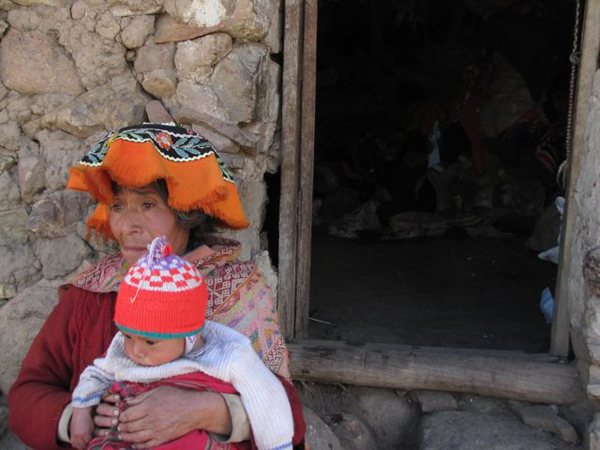
Ilaria Flores was an ageing but sturdy woman taking care of her infant grandchild -- seven months ago, her daughter had given birth to twins, but only had enough breast milk to feed one of them.
"When I found the baby, Ilaria had been feeding him potato-water because she couldn't afford to buy milk," Vilma said. "The child was nothing but skin hanging off bones -- his body was digesting his brain and organs as the only source of protein."
Today, baby Isaias is alert and chubby, if still a touch undersized. Vilma and McGirr chatted with his grandma for half an hour, admiring the shawl she was weaving from 12 colours of alpaca wool and placing an order for a new toque -- McGirr's son was about to turn 15, and she was in need of a birthday present.
Shortly before we bid adieu and hiked up the ancient Inca trail that would lead us back to the truck, both women kissed the wide-eyed baby, hugged his grandma, and left her with 17 cans of fortified milk. ![]()
Read more: Health, Gender + Sexuality


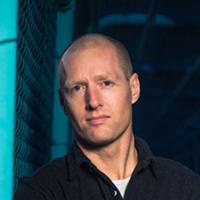
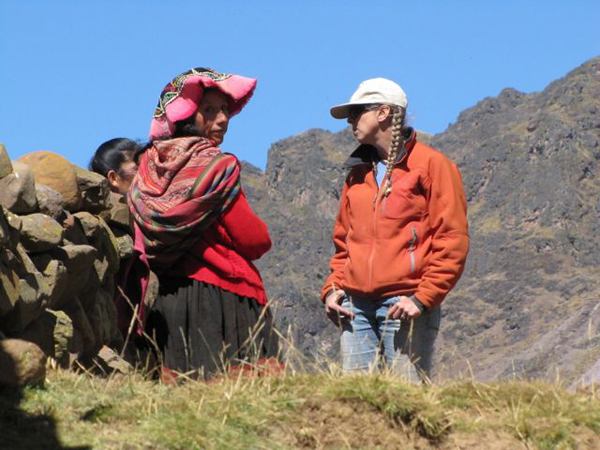












Tyee Commenting Guidelines
Comments that violate guidelines risk being deleted, and violations may result in a temporary or permanent user ban. Maintain the spirit of good conversation to stay in the discussion.
*Please note The Tyee is not a forum for spreading misinformation about COVID-19, denying its existence or minimizing its risk to public health.
Do:
Do not: